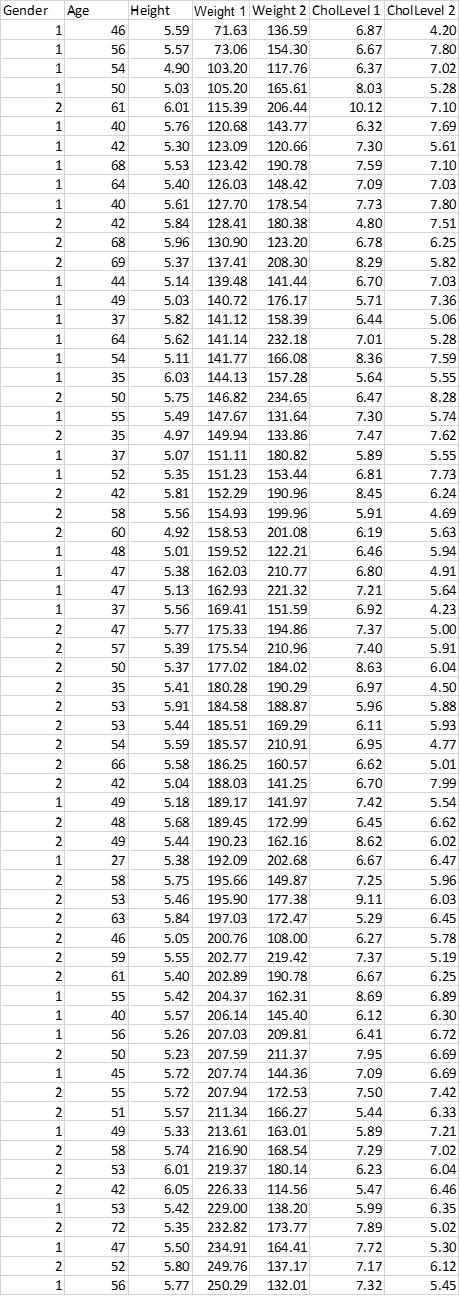Question
Nutrition education programs, which teach clients how to lose weight, reduce cholesterol intake, or reduce fat intake through better eating patterns, have been growing in
Nutrition education programs, which teach clients how to lose weight, reduce cholesterol intake, or reduce fat intake through better eating patterns, have been growing in popularity. The nurse in charge of one such program at a local hospital wanted to know whether the programs actually work to improve health measures. A random sample was drawn of 66 clients who attended a nutrition education program.The study recorded the following health measures: weight, cholesterol levels, total dietary fat intake per average day, total dietary cholesterol intake per average day, and percent of daily calories from fat. These data were gathered both before the program started and 3 months after the program. The researcher also determined the clients' genders, ages, and heights. The data are stored in the following way:
Column A: Gender (1 = female; 2 = male)
Column B: Age
Column C: Height (in feet)
Columns D and E: Weight, before and after (in pounds)
Columns F and G: Cholesterol Level, before and after
Please use the Wilcoxon Rank Sum Test to answer the following question:
Do males and females differ in the amount of reduction for each measure (weight, cholesterol level)?

Step by Step Solution
There are 3 Steps involved in it
Step: 1

Get Instant Access to Expert-Tailored Solutions
See step-by-step solutions with expert insights and AI powered tools for academic success
Step: 2

Step: 3

Ace Your Homework with AI
Get the answers you need in no time with our AI-driven, step-by-step assistance
Get Started


